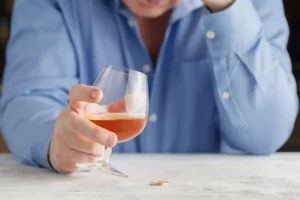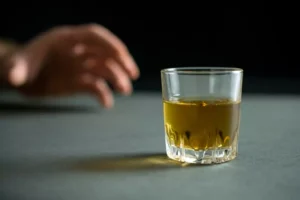
Alcohol use disorder is a problematic pattern of alcohol use that leads to distress in one’s daily life, according to the DSM-5. Experiencing at least two symptoms throughout the course of a year merits a diagnosis, from mild to moderate to severe. Growing up around family members and close relatives that suffer from alcoholism increases the risk of alcohol abuse for generations to come. When you’re surrounded by people who drink excessively, you can look at alcohol use differently and fall victim to bad habits. Another environmental factor, income, can also play a role in the amount of alcohol a person consumes. Contrary to popular belief, individuals who come from affluent neighborhoods are more likely to drink than those living below poverty.
- Having schizophrenia, post-traumatic stress disorder or bipolar disorder can be frustrating and difficult.
- In the United States, 78% of individuals with annual household incomes of $75,000 a year drink, only 45% of individuals with an annual household income less than $30,000 drink.
- People with mental health disorders may also feel too ashamed to seek help.
- Together they reflect the fact that there is no one path to addiction, and no one factor makes addiction an inevitable outcome.
How Long Can Cats Go Without Eating? Vet-Approved Dangers and Tips

This is especially common in individuals who have not been diagnosed or who have found that medication creates unpleasant side effects. Additionally, many psychological disorders reduce an individual’s ability to perceive the reality of their drinking or acknowledge risks and warning signs. In addition to ongoing mental health support, enhancing an individual’s “recovery resources” is also important. Providing education, job training and employment connections, supportive housing, physical activity, and social integration in families and the community can all help individuals stay in remission.
- A known example of genetic risk is that having alcoholic parents makes a person four times more likely to develop the diagnosis, per the American Academy of Child and Adolescent Psychiatry.
- People with both a mental health disorder and alcoholism end up having what’s known as co-occurring disorders.
- When people went back to the streets, there were even more drinks to be found, thanks to alcohol regulations that had been rolled back in many states during the pandemic.
- Treatment coverage for substance abuse disorders remains incredibly low.
Lack of Family Supervision
If you find that you’re feeling down, take a healthier route to feel better. Try meditating, talking to a friend, watching a movie, going for a walk or journaling. Drinking has been a socially acceptable practice all over the world for many years, and adults can feel pressure to be part of this. A person cannot get addicted to a substance without exposure to the substance, but exposure alone does not lead to addiction. One use of a substance can produce a pleasurable effect that motivates interest in repeating the experience. But the experience of pleasure is relative; it hinges in part on biology and very much on what else there is going on in a persons life that is meaningful or rewarding.
- But other numbers — data from study after study — give a more clear-eyed view of Americans’ drinking lives and the ripple effects.
- Alcoholism is not caused by a single gene, but rather a large number of genes that interact with one another.
- Explore topics related to alcohol misuse and treatment, underage drinking, the effects of alcohol on the human body, and more.
- The functional alcoholic often uses this stereotype to their advantage and hides behind it as an excuse to keep drinking.
- Still, there are some widely agreed-upon guidelines — drinking thresholds above which a person’s risk of developing a disease or shaving time off their life significantly increases, according to the data.
Social And Cultural Factors
- Learn up-to-date facts and statistics on alcohol consumption and its impact in the United States and globally.
- How long cats can go without eating is an important topic due to their unique system, as we will investigate.
- To a very large degree, brain hacks become appealing when there are restricted opportunities for meaning and for pleasure other than the response to drugs.
- For another, they may inherit whatever genetic or biological vulnerabilities laid the groundwork for a parental addiction.
- Peers play an enormous role in addiction susceptibility, especially among teens and young adults; most people use drugs for the first time as teenagers.
- While the factors that determine someone’s likelihood of becoming an alcoholic are complex and can only be interpreted by a clinician, the symptoms are much easier to spot.
Strategic areas include increased awareness through a global advocacy campaign, scaling up the capacity of health care systems and the training of health professionals, and accelerating resource mobilization. Around the world, the highest levels of per capita alcohol consumption was found in the WHO European Region and the Region of the Americas. Along with the hereditary elements, a person’s association with others and the environment can contribute to the development of alcoholism.

STAT Plus: Grail, aiming to market a blood test for cancer, faces host of challenges as it debuts on Nasdaq
Around the world and in the U.S., nicotine is the most widely used addictive substance; tobacco causes a reported 40 million deaths worldwide. Discover the impact alcohol has on children living with a parent or caregiver with alcohol use disorder. Find out how many people have alcohol use disorder in the United States across age groups and demographics. In young people binge drinking is more acceptable, and teenagers tend to drink with friends. Older people are more likely to drink alone, and take medications or have co-morbidities that make drinking more risky.
Audio and Subscription

«To build a healthier, more equitable society, we must urgently commit to bold actions that reduce the negative health and social consequences of alcohol consumption and make treatment for substance use disorders accessible and affordable.» The report shows an estimated 400 million people https://ecosoberhouse.com/article/alcohol-and-aging-does-alcohol-make-you-look-older/ lived with alcohol use disorders globally. The cause of alcohol addiction seems to be a blend of genetic, physical, psychological, environmental, and social factors. A given person’s risk of developing alcohol use disorder is three to four times greater if a parent is alcoholic.
Alcohol abuse kills three million people a year, most of them men – WHO report
Do you still want to hang out with your friends who drink, but don’t want to partake? He or she will talk to you about how these incidents have affected you long-term, and you’ll learn how to cope with trauma without turning to alcohol. A new type of peer-support therapy is showing results for these men and women. Explore statistics on alcohol-related deaths and emergency visits in the United States.

For more information on symptoms, causes, and treatment of alcohol use disorder see our Diagnosis Dictionary. Call now to connect with a treatment provider and start your recovery journey. Additionally, alcohol manufacturers are bombarding why do people become alcoholics the general public with advertisements. Many of these ads show drinking as an acceptable, fun and relaxing pastime. In just four decades – between 1971 and 2011 – alcohol advertising in the United States increased by more than 400%.
Psychological Factors
Research in animals shows that having more self-determination and control over one’s environment can help facilitate adaptive brain changes after ending substance use. Slips can be fueled by withdrawal symptoms, mental health challenges, and drug-related cues, such as spending time with old drinking partners or visiting old drinking locations. Triggers become engrained in addiction, so it’s valuable to recognize these cues, avoid them, and replace them with new behaviors, such as calling a sponsor or loved one when craving alcohol, which can help avoid a relapse.


